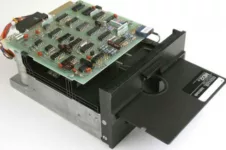- The US’ nuclear force still uses obsolete floppy disks designed in the 1970s to coordinate some of its operational functions, says a watchdog report. According to a report by the US Government Accountability Office (GAO), the Pentagon was still using 1970s-era computing systems that require “eight-inch floppy disks.”
For those of you who have no idea what a “floppy disk” is, they used them in the 70’s, early 80’s, to transfer data between computers. Flash disks and USB sticks did not exist, let alone wireless communication, and the floppies hat a capacity of only 720 KB! To put it in comparison, that would be enough for three middle size PDF files or a 15-20 second MP3 music file.

The storage capacity of an 8 GB USB stick is equivalent to over 1,100 floppy disks.
- Federal legacy IT investments are becoming increasingly obsolete, many use outdated software languages and hardware parts that are unsupported. Agencies reported using several systems that have components that are, in some cases, at least 50 years old.
Nowadays we would call our laptop a computer but everything else around us is just “smart”. To get a picture of what we used to call a computer in the 70’s and 80’s, we just have to take a look at the specs of the first IBM PC.
The first PC that was introduced in August 1981, had 256 KB internal memory, a floppy disk drive, no harddisk and a 4.7 Mhz Intel 8088 processor, we have toys now with more computing power. Even the first super computers, like the legendary Cray-1, had far less computing power than a modern day smartphone.

The Cray-1
- The GAO report says that US government departments spend upwards of $60 billion a year on operating and maintaining out-of-date technologies.The report says the Pentagon is planning to replace its floppy systems by the end of 2017.
Other departments were also put on notice to update their systems.
If it wasn’t so scary it would be hilarious to think that, theoretically the hardware running and controlling part of the worlds nuclear arsenal has less computing power and storage than a normal laptop.
(With inputs from PTI.)








